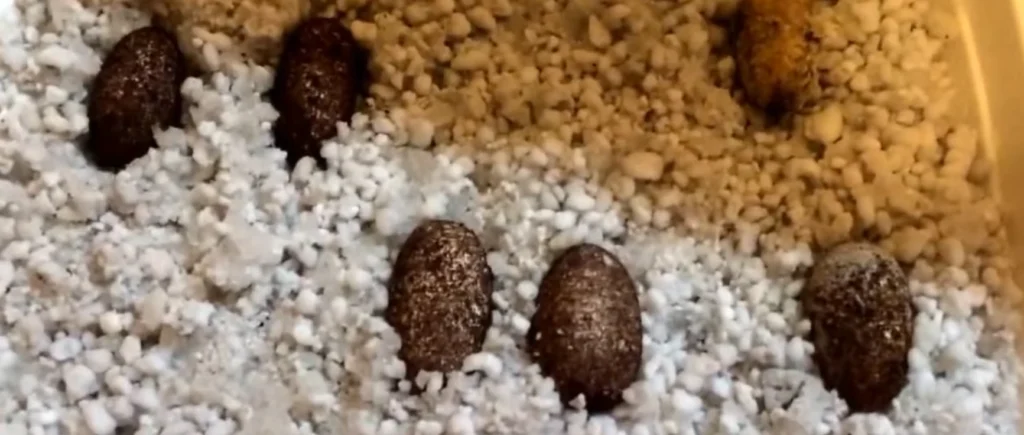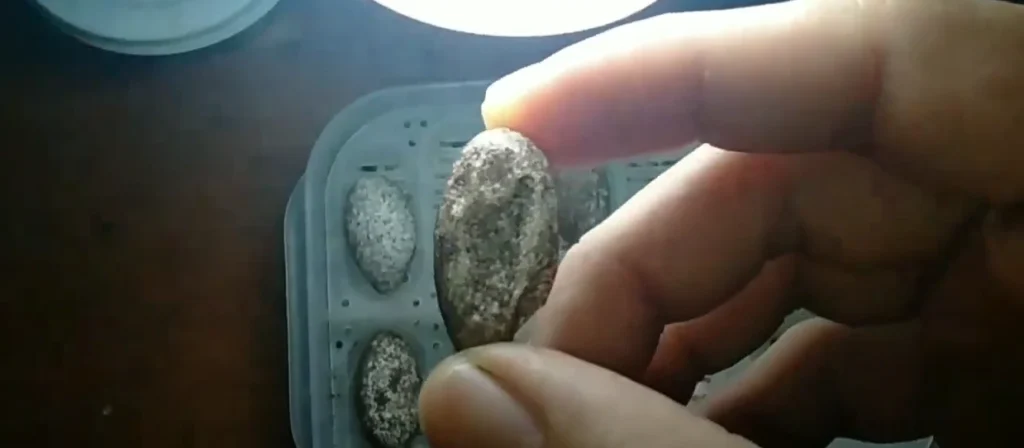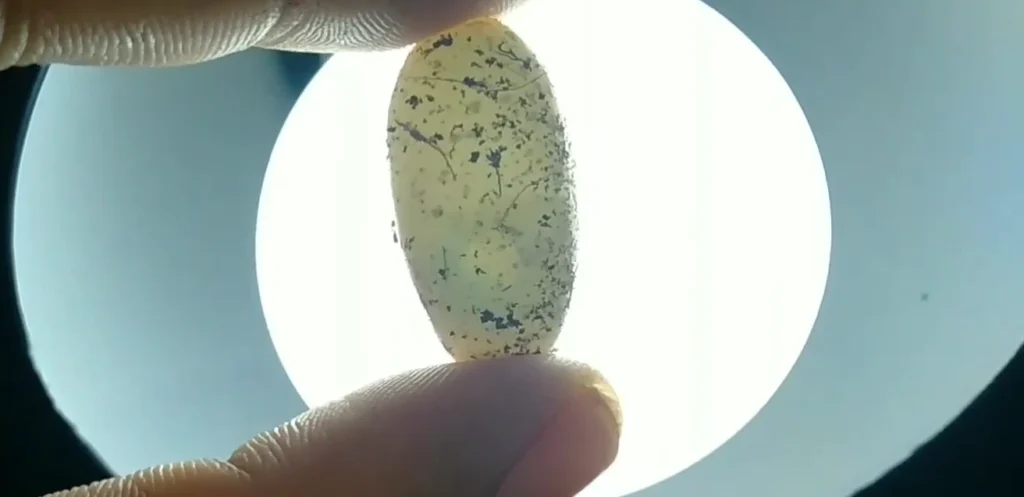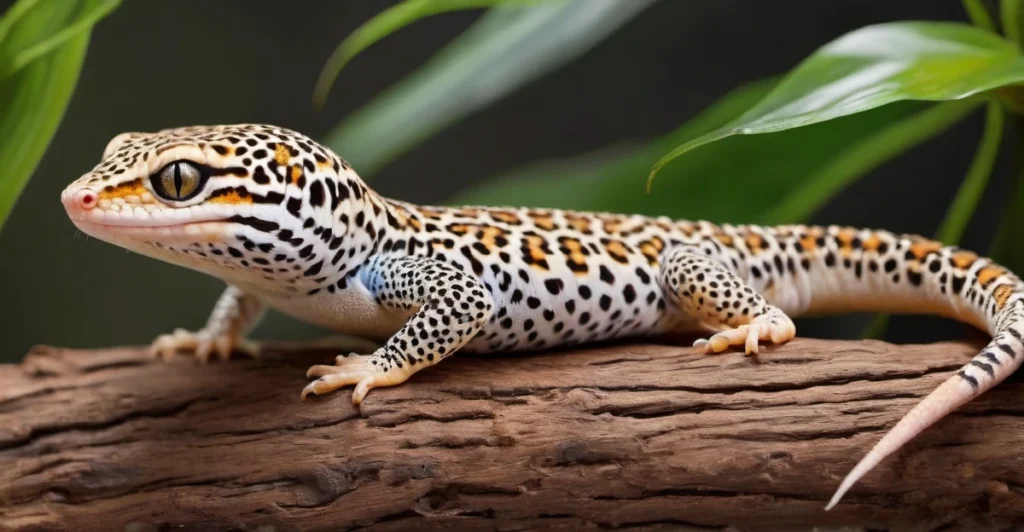Unexpected eggs from your leopard gecko? If you suspect they might be unfertilized leopard gecko eggs, don’t panic! We’ll guide you through identifying them, safe disposal, and the reasons behind this natural occurrence.

Credit: The McGrew Zoo
Understanding Unfertilized Leopard Gecko Eggs
Leopard geckos, known scientifically as Eublepharis macularius, are among the few reptiles that can lay unfertilized eggs, a process known as parthenogenesis. This phenomenon is quite fascinating and has been a subject of interest among herpetologists and pet owners alike.
What are Unfertilized Leopard Gecko Eggs?
Unfertilized leopard gecko eggs are essentially eggs that have not been fertilized by a male. Female leopard geckos can lay these eggs without any male interaction. This is a form of asexual reproduction, where offspring are produced by a single parent. It’s a survival mechanism that allows species to reproduce in the absence of males.

SLUG

Unfertilized Leopard Gecko Egg
Image Credit: Pet Cartel TV
Identifying Unfertilized Leopard Gecko Eggs
Identifying unfertilized leopard gecko eggs can be a bit tricky. They are usually smaller in size compared to fertilized eggs and have a different texture. Unfertilized eggs often appear deflated or shriveled, and may feel soft or squishy when gently squeezed. They also lack the typical pink or red blood vessels seen in fertilized eggs.
The Mechanism Behind Asexual Egg-Laying
The mechanism behind asexual egg-laying in leopard geckos is quite complex. It involves a process called automixis, where the egg cells undergo a form of cell division called meiosis, but then one of the polar bodies fuses with the egg to restore the diploid number of chromosomes. This results in an egg that is genetically identical to the mother.
Understanding the phenomenon of unfertilized egg-laying in leopard geckos can provide valuable insights into their reproductive behavior and biology. It can also help pet owners better care for their geckos and manage their breeding programs.
Causes and Implications of Unfertilized Leopard Gecko Eggs
What Triggers Parthenogenesis?
The exact causes of parthenogenesis in leopard geckos are not fully understood. However, it’s believed that certain environmental or physiological factors may trigger this phenomenon. For instance, a lack of males in the environment, changes in temperature, or hormonal imbalances could potentially stimulate a female gecko to lay unfertilized eggs. Stress and diet can also play a role in this process.
Genetic Factors
Genetic factors can also influence the occurrence of parthenogenesis in leopard geckos. Some research suggests that certain genes may predispose a gecko to lay unfertilized eggs. However, more research is needed to fully understand the genetic basis of this phenomenon.
Implications for the Gecko
From a biological perspective, parthenogenesis is a fascinating survival mechanism that allows a species to reproduce in the absence of males. However, it’s important to note that unfertilized eggs will not hatch into baby geckos. This means that while a female gecko can lay unfertilized eggs, these eggs will not contribute to the propagation of the species.
Health Risks
Laying eggs, whether fertilized or not, can pose health risks to the gecko. It can lead to calcium deficiency, as the process of egg production requires a significant amount of calcium. This can result in metabolic bone disease if not properly managed. Egg binding, a condition where the gecko is unable to lay eggs, can also occur and is a serious health risk that requires immediate veterinary attention.
Implications for the Owner
For pet owners, the laying of unfertilized eggs can be a cause for concern. It can be distressing to see your pet laying eggs that will not hatch. Moreover, egg-laying, whether the eggs are fertilized or not, can be physically taxing for the gecko. It’s important for owners to provide their geckos with proper nutrition and care during this time to ensure their health and well-being.

Handling Unfertilized Leopard Gecko Eggs
What to Do with Infertile Leopard Gecko Eggs
If you find that your leopard gecko has laid unfertilized eggs, you might be wondering what to do with them. The first thing to remember is not to panic. This is a natural occurrence and does not necessarily indicate a problem with your gecko’s health.
Unfertilized eggs should be removed from the gecko’s enclosure as soon as possible to prevent them from molding and potentially causing health issues. Use a spoon or similar tool to gently lift the egg out of the substrate to avoid damaging it. Once removed, the eggs can be disposed of in your regular household waste.
Why a Gecko Might Eat Its Own Eggs
In some cases, you might observe your leopard gecko eating its own eggs. This might seem alarming, but it’s actually a common behavior in many reptiles. Geckos do this to reclaim the nutrients they invested in producing the eggs. It’s particularly common when the eggs are infertile, as the gecko knows they won’t hatch.
However, if your gecko is consistently eating its own eggs, it might be a sign of nutritional deficiency. Make sure your gecko has a balanced diet, and consider consulting a vet if the behavior continues.
Preventing Infertility in Leopard Gecko Eggs
Factors Influencing Fertility
Several factors can influence the fertility of leopard gecko eggs. These include the health and age of the gecko, the quality of their diet, and the conditions in which they are kept.
Health and Age
A leopard gecko’s health and age can significantly impact their ability to produce fertile eggs. Young or unhealthy geckos may lay infertile eggs. Regular health check-ups and proper care can help ensure your gecko is in the best condition to lay fertile eggs.
Diet
A balanced diet is crucial for a leopard gecko’s reproductive health. Geckos need a diet rich in calcium and vitamin D3 to produce healthy, fertile eggs. Providing a variety of insects, such as crickets, mealworms, and waxworms, can help meet these nutritional needs.
Environmental Conditions
The environmental conditions in which a leopard gecko is kept can also affect egg fertility. Ideal conditions include a temperature of around 28-30°C (82-86°F) and a humidity level of 40-60%. It’s also important to provide a suitable laying box filled with moist substrate for the gecko to lay her eggs.
Breeding Practices
Proper breeding practices can also help ensure the fertility of leopard gecko eggs. This includes pairing geckos of appropriate age and size, and allowing adequate rest periods between breeding seasons.
Friendly and Reassuring
So, finding unfertilized leopard gecko eggs is completely normal! Sometimes it’s due to their environment, health, or just how geckos work. Understanding why it happens helps us give them the best care possible.
The key things are a good diet, the right habitat, and making sure they don’t get too stressed out. Whether their eggs are fertile or not, our job is to give our little gecko friends a happy, healthy life. For more information on leopard gecko care, check out this care sheet.
